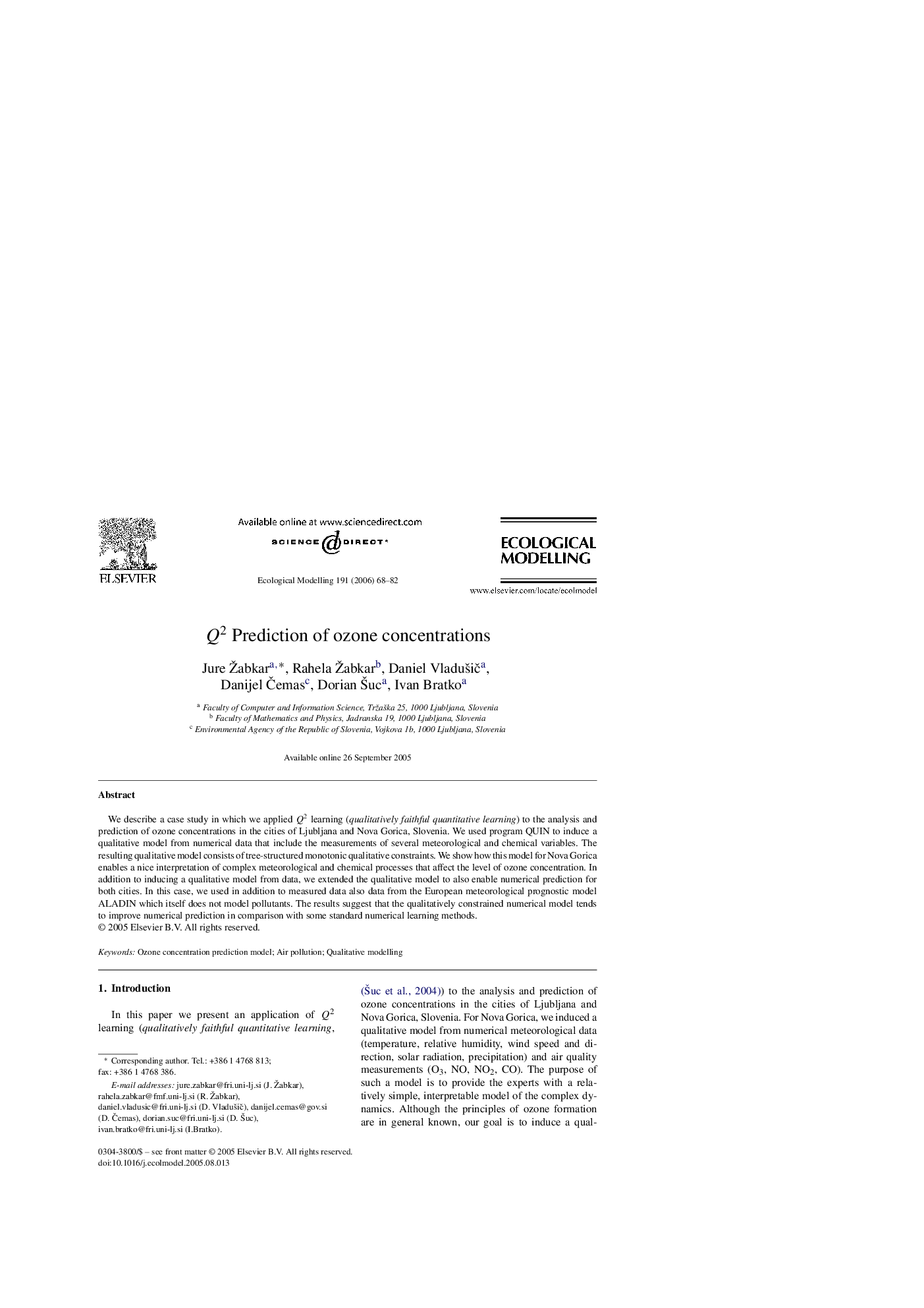| Article ID | Journal | Published Year | Pages | File Type |
|---|---|---|---|---|
| 4379383 | Ecological Modelling | 2006 | 15 Pages |
Abstract
We describe a case study in which we applied Q2 learning (qualitatively faithful quantitative learning) to the analysis and prediction of ozone concentrations in the cities of Ljubljana and Nova Gorica, Slovenia. We used program QUIN to induce a qualitative model from numerical data that include the measurements of several meteorological and chemical variables. The resulting qualitative model consists of tree-structured monotonic qualitative constraints. We show how this model for Nova Gorica enables a nice interpretation of complex meteorological and chemical processes that affect the level of ozone concentration. In addition to inducing a qualitative model from data, we extended the qualitative model to also enable numerical prediction for both cities. In this case, we used in addition to measured data also data from the European meteorological prognostic model ALADIN which itself does not model pollutants. The results suggest that the qualitatively constrained numerical model tends to improve numerical prediction in comparison with some standard numerical learning methods.
Keywords
Related Topics
Life Sciences
Agricultural and Biological Sciences
Ecology, Evolution, Behavior and Systematics
Authors
Jure Žabkar, Rahela Žabkar, Daniel VladuÅ¡iÄ, Danijel Äemas, Dorian Å uc, Ivan Bratko,
